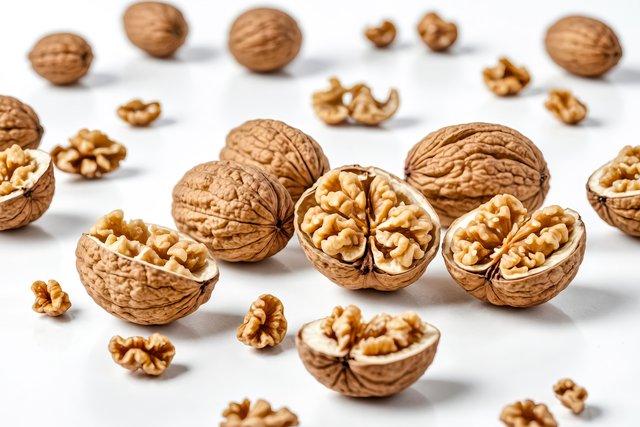Sorts of stance and what they mean for wellbeing

Act alludes to how an individual holds themselves while sitting or standing, especially in their back, neck, and shoulders. Specific kinds of stance might cause torment, uneasiness, or different side effects.
An unbiased stance — where the head, neck, shoulders, spine, and hips adjust — is generally the most gainful.
Be that as it may, certain propensities or normal exercises, like often working at a work area, can influence a singular’s stance over the long run and may prompt side effects, for example, back or neck torment. An individual might have the option to work on these side effects by changing their stance.
This article talks about various sorts of stance, conditions that can influence stance, and ways individuals might have the option to change their stance.
What are a few sorts of stance?
Act portrays the way that an individual generally holds themselves. There are two expansive sorts:
- static stance, which is the body’s position when still
- dynamic stance, which is the body’s position while moving
There are additionally terms for additional particular sorts of stance, for example,
- Nonpartisan stance: This is the point at which an individual sits or remains with the spine in a slight “S” shape, with the head, neck, and hips generally adjusted.
- Forward head act: In this sort of stance, the head extends forward over the neck, crooked with the spine. This can cause stress on the neck or back.
- Influence back pose: This alludes to the hips and pelvis shifting forward from the midline of the body. This can cause hip, back, or different wounds.
- Level back pose: This is the point at which the lower spine loses its normal bend and shows up straight. An individual can have this stance from birth or foster it later because of specific strategies or spinal circumstances.
An individual’s stance can rely upon their own propensities and day to day exercises, as well as specific medical issue.
Impartial stance
While there is nobody right stance that works for all individuals in all circumstances, an impartial stance is frequently the most secure for forestalling injury and muscle strain during everyday exercises.
Keeping the bones in the spine in unbiased arrangement decreases strain on the bones, tendons, and muscles while sitting, twisting, or lifting objects.
To see what an unbiased stance resembles:
- Stand before a mirror in profile so the side of the body is noticeable.
- Stand tall and upstanding.
- Place the feet shoulder-width separated, with the greater part of the load on the chunks of the feet.
- Move the head so it is level, with the ears in accordance with the highest point of the shoulder.
- Slant the hips so they line up with the shoulders.
- While sitting in an impartial stance in an ordinary seat, an individual’s spine stays in a nonpartisan arrangement, with their feet level on the floor and legs about hip distance separated.
Forward head pose
Forward head act (FHP) alludes to the head sitting ahead, crooked with the neck. This is the most common Trusted Source postural issue on the sagittal plane, which is a physical line partitioning the body into left and right parts.
While remaining with a FHP, an individual’s head is excessively far forward, with the ears before the shoulders. This can make an adjusted appearance in the upper back. While sitting with a FHP, an individual might look as though they are slumping.
Potential reasons for FHP include:
- drawn out time of sitting or remaining in a slouched position
- regular utilization of electronic gadgets that empower FHP, like peering down at a telephone
- muscle shortcoming in the neck, upper back, or shoulders
- muscle snugness in the neck or chest, which can pull the head forward
injury or injury to the neck or spine - stress or uneasiness, which might make muscle strain
Potential dangers of FHP
The heaviness of standing firm on the head in a forward footing
presses the cervical spine tissues and can causeTrusted Source side effects, for example,
- neck torment
- upper back torment
- shoulder torment
- cerebral pains
- temporomandibular joint brokenness
- cervical plate degeneration
Influence back pose
Influence back postureTrusted Source alludes to a position where the pelvis slants forward, before the midline of the body, while the upper back frequently inclines in reverse. The head may likewise extend forward.
While sitting in an influence back act, an individual’s lower back may fundamentally bend away from the rear of a seat, making an observable hole, with the pelvis shifted forward. Their upper back and shoulders might incline in reverse rearward of the seat.
Potential reasons for influence back act include:
- drawn out times of sitting
- drawn out and steady times of slumping or curving the lower back
- an absence of ordinary actual work
- pregnancy
- scoliosis
- hypermobility in the joints
- spondylolisthesis
- horrendous injury
- discitis
Potential dangers of influence back pose
The misalignment of the spine in an influence back stance can cause side effects or conditions, for example,
- neck torment
- lower back torment
- versatility troubles
- outer muscle wounds
Level back act
Level back act is the point at which the lower back has a less articulated normal bend, thus shows up level. An individual with a level back stance may likewise have a more articulated outward bend in the upper back. The pelvis mayTrusted Source stay in a nonpartisan arrangement or slant somewhat forward.
Flatback condition is the point at which an individual fosters a level back pose over the long haul. This can occur for some reasons, for example,
- going through a Harrington pole or spinal combination methodology
- ankylosing spondylitis
- rheumatoid joint pain
- degenerative plate illness
- vertebral pressure cracks because of osteoporosis
- lumbar postlaminectomy condition
- underlying contrasts present from birth
Potential dangers of level back act
The misalignment of a level back stance can cause a scope of side effects, including:
- back torment
- constant torment
- trouble standing straight
- weariness
- loss of portability
Conditions that influence pose
Many circumstances might influence an individual’s stance, either for a brief time or in the long haul. A few circumstances will influence an individual’s stance no matter what their everyday propensities or way of life.
Conditions that can influence pose include:
- Scoliosis: This condition influences 6 to 9 million individuals in the US. It is normally present in adolescence yet can happen in pubescence or further down the road. Scoliosis causes a sideways bend in the spine. In the event that an individual has one bend, their spine will be “C” formed, while with two bends, it will be “S” molded, bending side to side.
- Lordosis: This alludes to a misrepresented internal bend of the spine in the lower back. An individual can acquire lordosis hereditarily, or it can happen because of different circumstances, like osteoporosis. Lordosis is a potential reason for an influence back pose.
- Kyphosis: This alludes to an expanded forward bend in the spine. Hyperkyphosis alludes to when this bend is exorbitant. There are many reasons an individual might have or foster kyphosis, including Scheuermann illness and hereditary circumstances.
- Ankylosing spondylitis: This is an ongoing, fiery illness that influences the spine. As the condition advances, it can causeTrusted Source issues with pose.
Step by step instructions to change pose
In the event that an individual has an imbalanced stance because of elements inside their control, transforming it might be conceivable. Individuals can attempt:
- Changing their current circumstance: Any individual who invests a ton of energy at work areas, tables, or in seats can make sure that their arrangement empowers a nonpartisan sitting stance. This might mean changing the level of the table, the arms of a seat, or gear, like PCs and TVs.
- Extending: Extending muscles, especially those not extended frequently, can assist with lessening snugness and increment adaptability, which might permit an individual to change how they normally sit or stand.
- Practicing or having non-intrusive treatment: Exercise can fortify muscles that pull the head, neck, spine, and hips into an unbiased position, like the back muscles
- Rehearsing: In the event that an individual is accustomed to sitting or hindering a that is pointless, it can require investment to bring an end to the propensity. Reliable practice can assist an individual with changing their default position into one that is more impartial. An individual might find it helpful to put updates or put away times during the day when they can rehearse.
- Squirming: While an impartial stance is gainful, this doesn’t mean individuals can’t move or move around in their seats or while standing. Specialists suggest exchanging sitting positions frequently and getting up to enjoy reprieves.
While certain individuals might have the option to change their stance all alone, certain circumstances influence how an individual’s body is organized, so they can’t transform it along these lines.
In the event that the above tips don’t help or they cause torment, an individual ought to talk with a specialist.
Summary
Pose alludes to how individuals hold their bodies. An impartial stance is frequently the most helpful for staying away from injury and generally speaking wellbeing.
Different kinds of stance, for example, influence back or forward head pose, can prompt extra burden on muscles and joints and may add to medical issue.
Certain activities or way of life changes might help reinforce and adjust the body, permitting an individual to embrace a more unbiased stance. All things considered, there is no ideal stance that appears to be identical for each individual in each circumstance.
On the off chance that anybody has worries about their stance, they can talk with a clinical expert.






